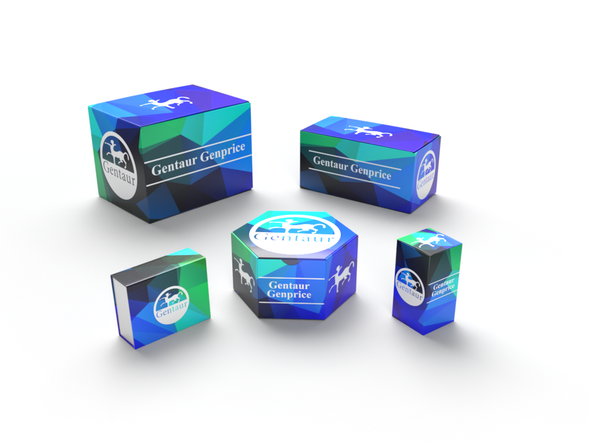BW
ANKRD22 Polyclonal Antibody | BS65474
- SKU:
- BW-BS65474
- Availability:
- Usually ships in 5 working days
Description
ANKRD22 Polyclonal Antibody | BS65474 | Gentaur UK, US & Europe Distribution
Host: Rabbit
Reactivity: Human,Mouse,Rat,Dog,Pig,Cow,Horse,Rabbit,Sheep,
Application: WB,
Application Range: WB=1:500-2000
Background: Ankyrins are membrane adaptor molecules that play important roles in coupling integral membrane proteins to the spectrin-based cytoskeleton network. Mutations of ankyrin genes lead to severe genetic diseases, such as fatal cardiac arrhythmias and hereditary spherocytosis. ANKRD22 (ankyrin repeat domain 22) is a 191 amino acid protein that contains four ANK repeats. Conserved in chimpanzee, dog, cow, mouse, rat, chicken and zebrafish, ANKRD22 is encoded by a gene that maps to human chromosome 10. Chromosome 10 encodes nearly 1,200 genes within 135 million bases, making up approximately 4.5% of the human genome. Several protein-coding genes, including those that encode for chemokines, cadherins, excision repair proteins, early growth response factors (Egrs) and fibroblast growth receptors (FGFRs), are located on chromosome 10. Defects in genes that map to chromosome 10 are associated with Charcot-Marie Tooth disease, Jackson-Weiss syndrome, Usher syndrome, nonsyndromatic deafness, Wolman’s syndrome, Cowden syndrome, multiple endocrine neoplasia type 2 and porphyria.
Storage & Stability: Store at 4°C short term. Aliquot and store at -20°C long term. Avoid freeze-thaw cycles.
Specificity: ANKRD22 Polyclonal Antibody detects endogenous levels of ANKRD22 protein.
Molecular Weight: 22 kD
Note: For research use only, not for use in diagnostic procedure.
Alternative Names: Ankrd22; Ankyrin repeat domain 22; Ankyrin repeat domain-containing protein 22; ANR22_HUMAN.
Immunogen: KLH conjugated synthetic peptide derived from human ANKRD22:51-150/191
Conjugate: Unconjugated
Modification: Unmodification
Purification & Purity: affinity purified by Protein A
Pathway:




![ANKRD22 Antibody (C-term) [APR31143G] ANKRD22 Antibody (C-term) [APR31143G]](https://cdn11.bigcommerce.com/s-1rdwiq712m/images/stencil/590x590/products/62286/62590/gentaur-genprice__26005.1661610467__29809.1661628092__75433.1661676199__77988.1661684280__64362.1661692443__87304.1661865345.png?c=1)

